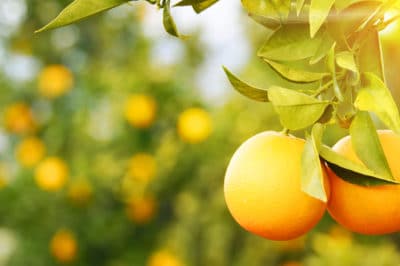Florida Orange Ripening Season
As subtropical trees suitable for USDA plant hardiness zones 9 through 11, all kinds of sweet oranges (Citrus sinensis) thrive in Florida. They start budding in late winter and blooming in early to mid-spring. But after that, their fruit takes from six months to well over a year to come into season:
- ‘Ambersweet’ hybrid: six to nine months
- ‘Hamlin’ hybrid: seven to nine months
- ‘Ruby Red’ navel: seven to nine months
- ‘Cara Cara’ navel: 10 to 11 months
- ‘Washington’ navel: nine to 12 months
- ‘Lane Late’ navel: 10 to 14 months
- Pineapple orange: eight to 10 months
- ‘Moro’ blood orange: eight to 11 months
- ‘Sanguinello’ blood orange: eight to 12 months
- ‘Tarocco’ blood orange: nine to 13 months
- ‘Temple’ hybrid: nine to 10 months
- ‘Valencia’: 12 to 15 months
Thanks to their staggered ripening schedule, Florida oranges of one kind or another are in season nearly all year long. ‘Valencia’ trees, in fact, may have green and ripe fruit simultaneously.
Recognizing Ripe Oranges
Unlike peaches, pears and other stone fruits, oranges stop ripening as soon as they’re harvested. So — if you’re planning a U-Pick outing — these signs of what to look for will tell you know which oranges to pick, and which to leave on the tree:
- Size: Ask in advance about how big the kind of oranges you’re picking should be. Ripe ‘Valencia’ and navel oranges average 3 inches around, while blood oranges are slightly smaller at 2 1/2 to 2 3/4 inches.
- Weight: As oranges mature, their pulp fills with juice. Avoid any that aren’t heavy for their size.
- Ease of picking: Grasp an orange and give it a gentle twist. A ripe orange’s stem will separate from the branch without resisting. If you have to tug it, it’s not ready.
Expert gardener’s tip: When tasting an orange to check its ripeness isn’t an option, smell it. Ripe orange rinds are loaded with citrus-scented oils.
